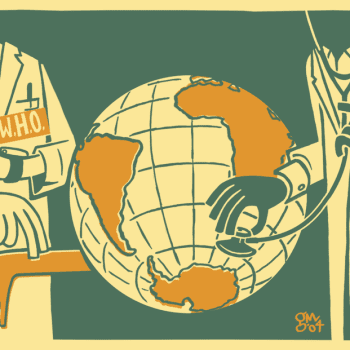U.S. government researchers who purposely infected unwitting subjects with sexually transmitted diseases in Guatemala in the 1940s had obtained consent a few years earlier before conducting similar experiments in Indiana, investigators reported Monday. . . .
At least 5,500 prisoners, mental patients, soldiers and children were drafted into the experiments, including at least 1,300 who were exposed to the sexually transmitted diseases syphilis, gonorrhea and chancroid, the commission reported. At least 83 subjects died, although the commission could not determine how many of the deaths were directly caused by the experiments, they said. . . .
In one case described during Monday’s two-hour hearing, a woman who was infected with syphilis was clearly dying from the disease. Instead of treating her, the researchers poured gonorrhea-infected pus into her eyes and other orifices and infected her again with syphilis. She died six months later.
The ultimate goal of the Guatemalan research was to determine whether taking penicillin after sex would protect against syphilis, gonorrhea and chancroid. The question was a medical priority at the time, especially in the military. The Guatemalan experiments, carried out between 1946 and 1948, aimed to find a reliable way of infecting subjects for future studies.
The research included infecting prisoners by bringing them prostitutes who were either already carrying the diseases or were purposely infected by the researchers. Doctors also poured bacteria onto wounds they had opened with needles on prisoners’ penises, faces and arms. In some cases, infectious material was injected into their spines, the commission reported.
The researchers conducted similar experiments on soldiers in an army barracks and on men and women in the National Mental Health Hospital. The researchers took blood samples from children at the National Orphanage, although they did not purposely infect them.
In the studies conducted in Indiana, researchers exposed 241 inmates in Terre Haute to gonorrhea in 1943 and 1944. But there, the researchers explained the experiments in advance in detail and experimented only on the prisoners who volunteered. In contrast, many of the same researchers who began experimenting on Guatemalans a few years later actively hid what they were doing and never tried to obtain permission, the commission found. . . .
Susan M. Reverby, a historian at Wellesley College in Massachusetts, discovered the Guatemalan experiments while doing research for a book on the infamous Tuskegee studies in Alabama. Reverby found papers from John C. Cutler, a doctor with the federal government’s Public Health Service. Cutler had participated in the Tuskegee experiment, in which hundreds of African American men with late-stage syphilis were left untreated to study the disease between 1932 and 1972. Cutler died in 2003.
via U.S. scientists knew 1940s Guatemalan STD studies were unethical, panel finds – The Washington Post.
















